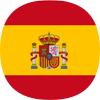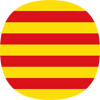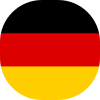
Séminaire public
Using Fascial Imagery in the Feldenkrais Method, Part 2 (online seminar)
avec Kathryn Hume-Cook
Cette page n’a pas été encore traduite en français, c'est pourquoi certaines parties du texte apparaissent en anglais. Vous pouvez sélectionner une autre langue dans la partie supérieure droite de la page.
Our understanding of whole-body movement is based on our internal self-image and the parts of ourselves that we are aware of. Our brain shapes the gestalt of a movement or an action as one whole piece of information and is not concerned with individual muscles.
In Feldenkrais lessons we use many wonderful tools to help us rediscover connections within ourselves and to find ways of sensing the synergy of movement-planning and movement-action. Using images to enhance student’s awareness of relationships and coherence within themselves is one of those techniques. I have found that thinking about fascial pathways along the length of the body can provide an integrative and accessible tool for sensing the coordination of well-distributed action throughout oneself.
The elasticity of the fascial membranes, and their tendency to overlie and overlap other structures, allows a way of thinking that can help to discover global coordination of movement in a new way.
In these workshops we will look at the way connective tissue creates lines of transmission throughout the body and use these images within classic Feldenkrais lessons, in order to enrich your experience of the lessons.
In Part 2 (this workshop) we will explore the way our arms connect into our body, the functional relationship between arms and legs, and the deep supportiveness of our inner core.
Our arms hang from the axial skeleton and are integrated into full-body movement through both superficial and underlying fascial structures. We will address the way the different parts of the hand and arm link in to the trunk and provide variable lines of control and stabilization. Our longitudinal structure and our small base of support dictate a functional union between arms and legs which utilizes the counterbalance effect of cross-lateral movement. The core connection from the soles of our feet throughout the whole length of ourselves can be thought of more in the sense of an internal space, which provides the background for well-adjusted tension throughout all the other lines.
Finding true length means balancing all these lines of tension. Our joints will be able to unfold more fully and access larger degrees of freedom if we can reconfigure body wide patterns of compensation and unite the communication between these opposing forces to a single sense of being in-tune with oneself.
Please note: This webinar is part 2 of two 2-day workshops about using fascial imagery in the Feldenkrais Method. In part 1 (13/ 14 March) we looked at connections along the back, the front and the sides of the body, as well as spiraling connections which wrap around us. Please find more information here…










